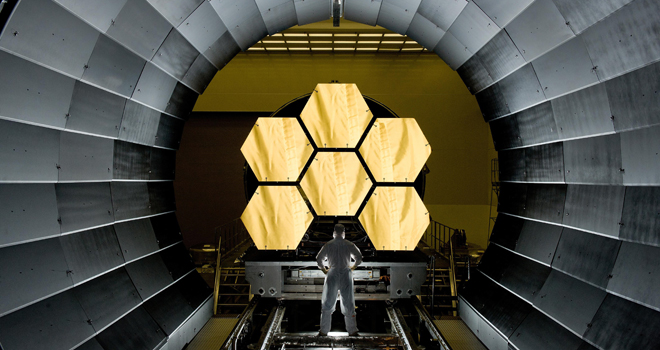For over two decades, the Hubble Space Telescope has orbited the earth, beaming back incredible cosmic vistas and furthering our understanding of the origins of the universe. Especially in the wake of the retirement of the Space Shuttle fleet earlier this year, Hubble arguably remains the most visible and popular NASA project.
But since last year, it’s been on borrowed time.
Due to be decommissioned in 2010 and replaced by a more powerful, more expensive and ultimately quite different successor, The James Webb Space Telescope (JWST), Hubble has seen its life extended by at least four years while its successor may be killed in the cradle.
Popular outcry over the end of Hubble led NASA to undertake a last-ditch repair program in 2009 that will keep the older telescope going for the next four years. But eventually, its high-powered instrumentation will stop working for good.
Meanwhile, the JWST has been repeatedly delayed and seen its costs swell from an original estimate of $5 billion dollars to a staggering $8.7 billion. Already an estimated $3 billion has been sunk into the project, which won’t be operational until 2018 at the earliest.
Obviously, given the current fiscal climate, it’d be tough to justify dumping any more taxpayer money into it’s replacement, even considering the eloquent pleas from scientists around the globe, who point out that the JWST’s advances over Hubble would be, well, astronomical — in excess of 100 times more powerful — since it has infrared sensors and an enormous mirror that allow it to peer deeper into the universe and further back in time.
Indeed, just last month, it appeared as though the JWST faced certain doom due to the fact that its primary source of funding, NASA’s astrophysics budget, was on the Congressional chopping block.
But now, it appears as though there may be hope for the infrared eye in the sky: NASA will spread the cost across the agency rather than just pulling from the $1 billion astrophysics division, with at least half of the funds coming from other areas of NASA’s total $18 billion budget, according to a new report from Nature magazine (via Scientific American).
Still, the new plan faces some hurdles: Namely the Office of Management and Budget, which is currently considering NASA’s 2012 budget request, and the House Appropriations Committee, which vehemently opposes the project and will likely continue to do so when Congress returns in September and picks up the 2012 budget debate.
As Nature notes, the fate of the JWST probably comes down to Sen. Barbara Mikulski (D-Md.), whose state is home to the project, persuading Congress that the telescope is a dream worth seeing realized, albeit a very costly and time-consuming one. And it’s a dream that just doesn’t make sense to the Tea Party, not even to its spacefaring wing.









